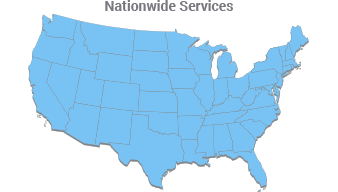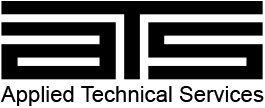- Home
- Services/IndustriesServicesindustries
- About Us
- LocationsStatesAccordion ContentAccordion ContentAccordion ContentAccordion Content
- Job Openings
- Quick Links
- ATS Family
Unmanned Aircraft Systems and Drone Inspections
Drones, also known as UAV (Unmanned Aerial Vehicle) and UAS (Unmanned Aircraft System), are being employed in just about every area of life and how we go about doing things. It seems that a week doesn’t go by without a new use for a drone is being visualized and capitalized upon. At ATS we can help you, in a cost-effective way, with some of the many new methods that are out there utilizing a UAV (Drone). In addition, all of Applied Technical Services UAV professional pilots are Part 107 FAA licensed and US military veterans. Because of the ability to reach particular areas that for many would be cost-prohibitive or otherwise inaccessible, UAVs are evolving as an optimal operational instrument for many services including environmental administration and monitoring, accident investigations and various types of inspections to name a few.
Information Duplication
Not long ago, the only form of taking most aerial shots was by using a camera boom, getting on top of buildings, using aerial lifts or scissor lifts, using a very long ladder or even using a helicopter. Now, employing drone shots (UAV’s) is a very conventional cost-effective tactic, and even though aerial lifts and helicopters still have their practices, the innovative aerial drone solution has supplemented greatly to many programs. With our quick deployment and report turnaround time, Applied Technical Services is a one-stop shop for all your aerial drone photography documentation needs.
Evidence Delivery
With over 50 years of testing and investigations, our experts are just a phone call away. There are numerous means that ATS can help you achieve your needs. All of our testing and inspection methods are centered on prerequisites or mandates defined by the American Society for Non-Destructive Testing ANSI/ASNT CP-105 and CP-189, A2LA, ASTM, ISO 9001, ISO Guide 17025, NFPA, NAFI, IAAI and NADCAP.
Services Offered
- Accident Scene Documentation
- Aerial Drone Documentation
- Aerial Drone Photography
- Filming Land Wildlife
- Environmental and Meteorological Monitoring
- Property Inspections
- Property Insurance Forensic Investigation
- Fight against Poachers
- Infrastructure Maintenance (Bridge and road inspections)
- Accident Reconstruction
- Forensic Animation for Demonstrative Evidence
- Insurance Investigations
- 3D Site Scanning
- Forensic Anthropology
- Fire and Explosion Investigations
We also offer the following services as applications of our aerial thermal photography (thermography) capabilities:
- Building Inspections
- Bridge Inspections
- Electrical Panel Inspections
- Power Line Inspections
- Utility Inspections
- Roofing Inspections
- Solar Panel Inspections
- Search and Rescue Assistance
- Hydrography (or Precision Agriculture)
- Fire Fighting Assistance
- Law Enforcement and Police Help
- Detect Thermal Patterns on Boiler Tubes
- Proactively Oversee Volume of Liquid in Storage Tanks to Detect Leaks
ATS Unmanned Aircraft System Protocols
All our UAV operations are required to follow the guiding principles outlined below to maintain a safe work environment and achieve compliance with FAA regulations on commercial drone use.
- Drones are given a thorough pre-flight inspection by the operator before each flight
- All ATS drones are under 55lbs weight at takeoff
- Operator will always be in visual-line-of-sight (VLOS) of the UAV
- Periodically, ATS may bring an additional observer to assist in VLOS requirements
- When taking video, a camera operator will assist during flight time. This will allow ATS pilots to be safer and assist in obtaining those hard-to-acquire shots, letting the ATS pilot focus solely on flying
- ATS does not use First Person View (FPV) goggles
- Maximum airspeed for the UAV is 100mph (87 knots)
- Maimum altitude for the UAV is 400ft above ground level*
- If the video shoot is inside a 5 mile radius of an airport or any class B, C, D, or E airspace (ATS will examine this before initial meeting), ATS will need to secure permission for the flight before starting
*VLS and Part 107 of the Federal Aviation Regulations states that “The maximum allowable altitude is 400 feet above the ground, and higher if your drone remains within 400 feet of a structure. Operations in Class G airspace are allowed without air traffic control permission. Operations in Class B, C, D and E airspace need ATC approval.”
If your company needs inspection on a hard-to-access area, contact ATS to see if our unmanned aircraft systems can help — We take a closer look!

Request Form
"*" indicates required fields
Camera Inspections
